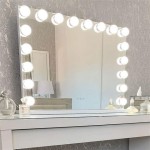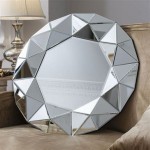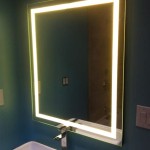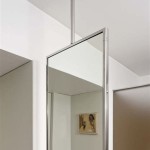What Is Mirror Therapy Used For?
Mirror therapy is a rehabilitation technique that utilizes a mirror to create a reflective illusion of a limb. It's primarily used to treat phantom limb pain, complex regional pain syndrome (CRPS), and other conditions affecting motor function. The therapy works by tricking the brain into perceiving movement and sensation in the affected limb, thereby promoting neuroplasticity and alleviating pain.
Phantom Limb Pain
Phantom limb pain is a common experience for individuals who have undergone an amputation. This phenomenon involves the perception of pain originating from the missing limb. While the exact mechanisms behind phantom limb pain are still being investigated, it's believed to be related to changes in the brain's sensory map following amputation. Mirror therapy is thought to help reorganize this map by providing visual feedback of movement in the reflected, intact limb. This visual input can override the erroneous pain signals from the missing limb, reducing pain intensity and improving quality of life.
Patients experiencing phantom limb pain are instructed to position the mirror so that the reflection of their intact limb appears in the place of the missing limb. They then perform movements with the intact limb while observing the reflection. This creates the illusion of movement in the phantom limb, effectively "tricking" the brain. The visual feedback can help re-establish a sense of control over the limb and reduce the perception of pain.
Complex Regional Pain Syndrome (CRPS)
Complex regional pain syndrome (CRPS) is a chronic pain condition often triggered by an injury or surgery. Characterized by intense pain, swelling, changes in skin temperature and color, and impaired motor function, CRPS can significantly impact daily life. Mirror therapy can be a valuable tool in managing CRPS symptoms. The visual feedback provided by the mirror encourages the brain to reintegrate the affected limb, improve motor control, and reduce pain perception. This can contribute to increased mobility and functionality.
For patients with CRPS, mirror therapy involves placing the mirror in a position that allows the patient to see the reflection of the unaffected limb superimposed over the affected limb. By performing simple movements with the unaffected limb and observing its reflection, the illusion of movement is created in the affected limb. This visual stimulation can help to reduce pain, improve range of motion, and restore function in the limb affected by CRPS.
Stroke Rehabilitation
Stroke can often result in hemiparesis, a condition characterized by weakness or paralysis on one side of the body. This can significantly impact an individual's ability to perform daily tasks. Mirror therapy can be incorporated into stroke rehabilitation programs to improve motor function and promote recovery. By observing the mirrored movements of the unaffected limb, the brain is stimulated to activate the corresponding motor pathways in the affected limb, facilitating recovery and improved motor control.
In stroke rehabilitation, the mirror is positioned so that the patient can see the reflection of their unaffected limb moving as if it were the affected limb. This visual feedback helps to stimulate the brain's motor cortex and encourage neuroplasticity, facilitating the relearning of movement in the affected limb. Through repeated practice and visual feedback, patients can gradually regain strength, coordination, and control in the affected limb.
Other Applications
Beyond these primary applications, mirror therapy is also being explored as a potential treatment for other conditions. These include focal hand dystonia, a neurological movement disorder affecting the muscles of the hand, and cerebral palsy, a group of disorders affecting movement and muscle tone. Research is ongoing to determine the effectiveness of mirror therapy in these and other areas.
The simplicity and affordability of mirror therapy make it an accessible and potentially valuable tool in rehabilitation. While mirror therapy may not be suitable for everyone, and it is important to consult with a healthcare professional before starting any new treatment, it offers a promising approach to managing pain and improving motor function in a variety of conditions. Further research is warranted to fully understand its mechanisms and optimize its application across different patient populations.
Important Considerations
While generally considered safe, mirror therapy may not be suitable for all individuals. Some patients may experience frustration or distress during the therapy, particularly if they are struggling to achieve the desired results. It's important to work with a qualified therapist who can provide proper guidance and support throughout the process. The therapist can help to adjust the exercises and techniques as needed to ensure the therapy is effective and comfortable for the individual.
Future Directions
The field of mirror therapy is constantly evolving, with ongoing research investigating its potential applications and refining its techniques. Future research will likely focus on identifying specific patient populations who are most likely to benefit from mirror therapy, as well as optimizing treatment protocols to maximize its effectiveness. Advances in technology, such as virtual reality and augmented reality, may further enhance the capabilities of mirror therapy and expand its accessibility to a wider range of patients.

Northeast Rehab Mental Imagery And Mirror Therapy

Mirror Therapy For Stroke Patients How To Improve Mobility

Fooling The Brain Pain Role Of Mirror Therapy And Modern Uses In Virtual Reality Frontiers For Young Minds

Mirror Therapy Wikipedia
Mirror Therapy For Chronic Pain The Hand Society

Mirror Therapy Box Medilab

Mirror Therapy Exercises For Stroke Recovery

Saebo Mirror Box Therapy Arm And Hand Function

Mirror Therapy For Stroke Rehabilitation Tricking The Brain Into Believing What It Sees

Mirror In My Hand How Box Therapy Can Support Stroke Rehabilitation Tyromotion








